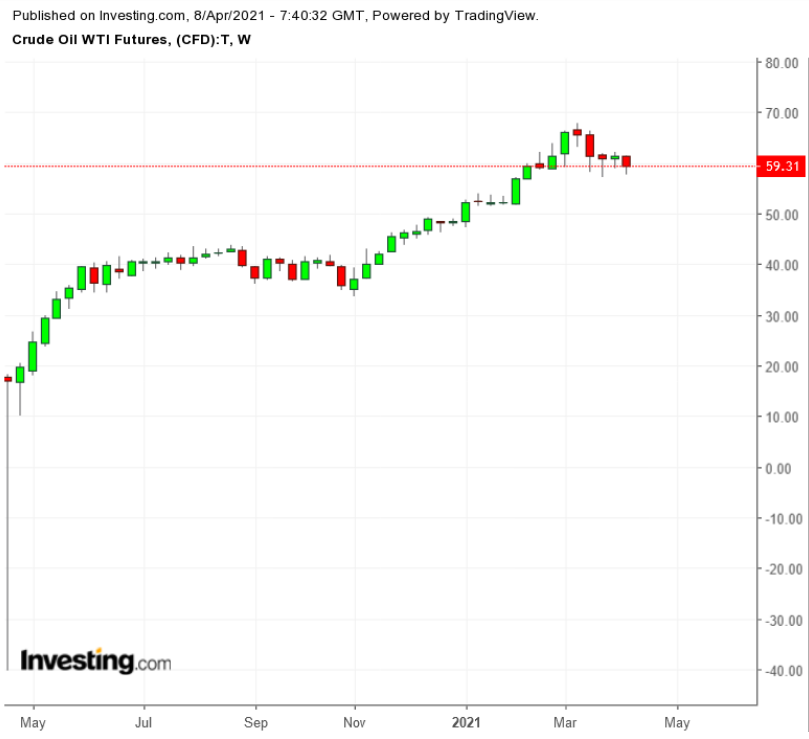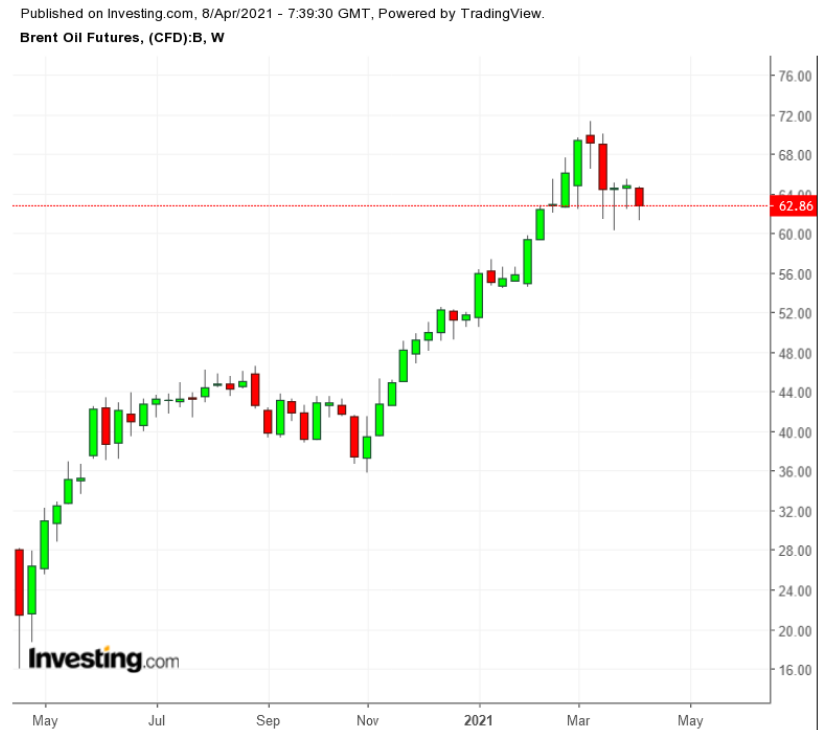In February, I highlighted the role that India will play in global oil demand in the coming years as its economy grows and oil consumption increases. In 2019, India was the third-largest consumer of oil and petroleum products, after the United States and China. India has almost no domestic oil resources, so all of its demand must be satisfied by imported oil.
Forecasters disagree on how much India’s oil consumption will grow in the coming years, but the IEA predicts that it will accelerate from 4.9 million bpd in 2019 to 6 million bpd in 2024.

Traders can better understand the likely future sources of India’s oil supply by first understanding the current oil situation. Moreover, India’s supply choices today and in the future impact oil market fundamentals as well as oil politics in OPEC, OPEC+ and beyond.
Reliance On OPEC+ Presents Strategic And Pricing Risks
In 2019, according to the EIA, 59% of India’s oil imports came from the Middle East. Iraq and Saudi Arabia were the largest suppliers, comprising 22% and 19% of the stock, respectively. This makes sense because the Middle East is near India, and shorter shipping times mean lower freight rates.
According to Samir Madani, co-founder of TankerTankers.com, it takes only 2-4 days to ship oil from the Persian Gulf to various ports in India, compared to a 6-week journey from North and South America. Other notable non-Middle Eastern suppliers for India in 2019 included Nigeria with 8%, Venezuela with 7% and the United States with 5%.
In 2020, India reduced the oil it imported from Venezuela as a result of U.S. sanctions imposed on Venezuelan oil. To make up for this, last year India increased its imports from Iraq, the UAE, the U.S. and Kuwait.
India’s heavy reliance on Middle Eastern oil is a strategic risk for the South Asian country. Recently, India’s reliance on oil from the OPEC+ group has emerged as a price risk as well.

As much as 83% of India’s oil comes from OPEC+ members. At the beginning of March, as Brent prices rose to $70 per barrel, India called on OPEC+ to increase oil production and specifically mentioned Saudi Arabia’s unilateral decision in January to cut an extra 1 million bpd of production as causing “confusion for the consuming countries” and higher crude oil prices. India wanted more long-term guidance on OPEC+ oil supply, and would have preferred lower prices.
OPEC+ decided not to increase production at that March meeting, and the Saudi oil minister said that if India wants more oil it should draw down its own oil inventory. This comment did not sit well with India and spurred India to change its oil supply mix away from a dependence on Saudi Arabia.
Although OPEC+ has now decided to increase production starting in May and Saudi Arabia has committed to bringing back the extra oil it was holding off the market, India insists these verbal commitments are not enough to alleviate concerns. For India, producing nations in the OPEC+ agreement—and Saudi Arabia in particular—are not acting like reliable suppliers.
India had already started reducing the amount of oil it purchased from Saudi Arabia in February, when the extra Saudi cut was implemented, dropping Saudi Arabia to its 4th largest supplier from 2nd. Despite the OPEC+ commitment to increase oil production in May, Saudi Aramco (SE:2222) raised its official selling prices (OSPs) for Asia for the month of May.
As a result, India significantly reduced the amount of oil it is buying from Saudi Arabia. Indian state refiners put in orders for only 9.5 million barrels of Saudi oil for May. Previously, the state refiners had been buying about 14.8 million barrels of Saudi oil per month.
But India’s state refiners are not just looking beyond Saudi Arabia and the Middle East for oil, they are looking outside of OPEC+ altogether. Shipments of oil from the United States to India have been slowly but steadily increasing. India is also looking to buy from new suppliers, like Guyana and Norway's Johan Sverdrup field. In addition, it just bought its first cargo of Brazilian Tupi crude.
Indian refiners may have to pay more for shipping when they purchase oil from such a distance, but diversifying away from OPEC+ reduces the country’s dependence on that cartel, and it ensures that India is not impacted negatively by OPEC+’s newfound commitment to reacting monthly to market changes.
Although India’s changes may not directly impact the overall price of the oil benchmarks, India’s appetite for non-OPEC+ oil is an important development in the global oil trade. India’s oil consumption is rising, and its appetite for non-OPEC+ sources of oil could make a major difference for less established oil suppliers.
It also sends an important signal to Saudi Arabia, OPEC and OPEC+. Specially, this is a warning to OPEC+ members that their reactionary, month-to-month production policies are concerning consumers who want stable, reliable sources of oil. Those consumers can and will use their market power to take their business elsewhere—to producers offering greater reliability.
